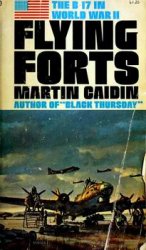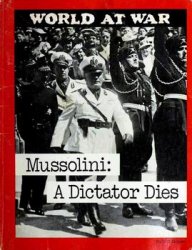AIR SERV INTERNATIONAL: P. O. Box 3041, Redlands, California 92373, United States; Phone (909) 793-2627; Fax (909) 793-0228; Year Founded 1991. Robert E. Leanhart forms this regional at Redlands, California, in 1991 to operate scheduled passenger and cargo services. The fleet grows to include 4 Cessna 208 Caravan Is, 2 de Havil-land Canada DHC-6-300 Twin Otters, 3 Cessna 206s, and 2 Cessna 210s. Enplanements for the year total 41,728.
1992 is not a good year for the privately owned, 90-employee newcomer. Passenger boardings decline 33.2% to 31,328 while freight falls 33.7% to 3,354,000 pounds.
Flights continue in 1993-2000. During these years, the mission of the company is changed from a scheduled to a nonscheduled carrier, flying on behalf of nonprofit humanitarian and international relief organizations.
Kenneth Frizzel is now president. His 90-employee airline operates 1 Beech King Air 90, 2 Super King Air 200s, 3 Cessna 206s, 2 C-210s, 3 C-402Cs, 5 C-208 Caravan Is, and 4 Twin Otters. Income average $17.5 million per year.
AIR SERVICE COMPANY: Iran (1962-1979). Formed as an associate of the Tehran-based Air Taxi Company in 1962, Air Service undertakes contract flights and charters on behalf of the oil industry, plus logistics flights to Persian Gulf islands. Over the next 15 years, the fleet comes to comprise 4 Fairchild Hiller FH-227Bs. Like many other Western concerns, the carrier ceases operations during the Iranian revolution of 1979.
AIR SERVICE GABON, S. A.: P. O. Box 2232, International Airport Leon M’Ba, Libreville, Gabon; Phone 241 73 24 08; Fax: 241 73 60 69; Code AGB; Year Founded 1965. Privately owned ASG is formed at Libreville in 1965 to provide local, domestic passenger and charter services. Operations continue apace for the next quarter-century using single-engine Cessnas.
In 1993-1994, General Manager Francis Lascombes oversees 52 employees and a fleet comprising 2 Beech King Air 200s, 1 each CASA C-212-100 and -200 Aviocars, 1 Cessna 310, 2 Cessna 404s, 1 Cessna 402, and 1 PBN-2 Islander.
Flights continue in 1995-2000, although the C-310 is retired.
AIR SERVICE HUNGARY, LTD.: Koerberki ut 36, Budapest, H-1112, Hungary; Phone 36 (1) 185-1344; Fax 36 (1) 166-8118; Year Founded 1990. This domestic operator is formed at Budapest in 1990 as an air taxi, agricultural, charter, and air ambulance operation. Director General Laszlo Kozma’s 1,300-employee company possesses a fleet comprising 64 Antonov An-2s, 3 Let L-410s, 70 Kamov Ka-26 and
9 McDonnell Douglas MD-500 helicopters. It is the largest collection of small fixed - and rotary-wing aircraft in the nation. The year’s enplane-ments total 2,000.
In 1991, airline employment is cut 36.7% to 760 and a total of 5,000 souls are flown. Revenues reach $9 million, producing a $1-million operating profit.
During the summer of 1992 scheduled passenger and cargo flights are initiated to and from domestic destinations. In 1993, general director Kozma’s workforce is cut to 800 and the fleet is reduced to
10 An-2s and 2 Let 410s, plus helicopters. Operations continue apace in 1994. Dr. Pat Horvath becomes president under Kozma and a Tupolev Tu-134 is acquired.
Flights continue in 1995-2000. During these years, Zoltan Jancsi becomes chairman, with Dr. Istvan Lovro as general director. Airline employment grows to 89 and the fleet is altered to include 3 An-2s, 3 Kamov 26s, and 1 MD-500.
AIR SERVICE LIMBURG, B. V.: Vliegveldweg 12, Postbus 301, Maastricht-Aachen Airport, Maastricht, N-6192, The Netherlands; Phone 043 3646949; Fax 043 3646944; Http://www. asl. nl; Year Founded 1992. Capitalized at six million guilders, ASL is established by Bill Kuiper and Willy Waldhausen in 1992 to offer executive and small group passenger charters. Revenue services begin with a fleet that includes Beech King Air 90s, Super King Air 200s, and 1 each Beech Bonanza, Beech 60 Duke, Piper Turbo Arrow IV, and Cessna 172.
AIR SERVICE NANTES, S. A.: France (1988-1992). Organized at Nantes in 1988, President Andre Beladine’s 15-employee carrier undertakes charter passenger and cargo flights to destinations in North Africa and the Middle East. The initial fleet comprises 1 each Dassault Falcon 20 and Aerospatiale Caravelle XR.
Two Beech Super King Air 200s are added to the fleet in 1990 along with another Dassault Falcon 20. A Boeing 737-217, once flown by CPAir, is acquired in 1992; however, it adds too much capacity for the company’s requirements and is leased to the new Vietnamese carrier, Pacific Airlines. Unable to maintain either traffic or financial viability in a recession, the company folds at year’s end.
AIR SERVICE UKRAINE: Klimenko 23, Klimenko, 252110, Ukraine; Code ASG; Year Founded 1994. ASU is set up at Klimenko in 1994 to operate international, regional, and domestic all-cargo charter services. Revenue flights begin with a fleet of 10 Ilyushin Il-76MDs and 2 Beech Super King Air 200s.
AIR SERVICES OF INDIA, LTD. (ASA): India (1936-1953). Capitalized at a million rupees, privately held ASA is formed on September 5, 1936 to provide scheduled services north of Bombay in the Kathiawar district. Equipped with an Airspeed Courier and a de Havilland DH 89, christened City of Bhavnagar, the company begins four-times-per-week services Bombay-Porbandar on November 1, 1937, via Bhavnagar, Rajkot, and Jamnagar.
Flights continue into 1938; however, operations are suspended during the annual monsoon season from June-September. Twice-weekly Baroda-Amreli flights begin in November.
On January 5, 1939, twice-weekly Bombay-Kolhapur via Poona operations commence and in January 1940 the service, subsidized by Cutch State, is extended to Bhuj. Despite assistance, the company is unable to maintain economic viability and ceases operations in February 1941.
Acquired in 1943 by the steamship company Scindia Steam Navigation Co., Ltd., ASA resumes services as “The Scindia Line” on May 3, 1946, flying a daily Bombay-Bhuj service, via Jamnagar, with Douglas DC-3s. On June 28, Bombay-Lucknow flights begin via Indore, Bhopal, and Kanpur. A Bombay-Indore-Gwalior-Delhi DC-3 frequency is started in April 1947; in August, the Bombay-Lucknow route is suspended.
When Ambica Airlines, Ltd. collapses in February 1949, its routes from Bombay to Morvi and Bangalore via Rajkoi and Poona are taken over. A pair of French-built SNCASO SO-95 Corse Ils are acquired and are placed on three services out of Bombay: to Bangalore via Hyderabad; to Bangalore via Poona; and to Delhi via Indore and Gwalior. Both are withdrawn in October 1950.
Bombay-Belgaum-Cochin services are launched on April 10, 1951. As the result of parliamentary study and debate, it is decided to nationalize the Indian air transport industry.
On May 9, 1953, a DC-3 is lost on takeoff from Juhu Airport at Bombay when its gear is retracted prior to liftoff; although the aircraft is damaged beyond repair, there are no fatalities.
An Air Corporation Bill receives presidential assent on May 28 and on August 1, Indian Airlines Corporation is formed, taking over ASA and other carriers.
AIR SEYCHELLES, LTD.: Victoria House, P. O. Box 386, Victoria, Seychelles; Phone 248 381 000; Fax: 248 373 111; Http://www. airseychelles. it; Code HM; Year Founded 1977. Formed at Victoria, on the island of Mahe in the Seychelles, in September 1977, this state-owned carrier is initially known as Seychelles Airlines, Ltd. Plans are put afoot to begin the operation of scheduled local and international services.
In July 1979, the nonflying company is reformed at Mahe through the merger of Air Mahe, Ltd. (founded in 1972) and Inter-Island Airways, Ltd. (established in 1976) and is renamed. Chairman Guy Morel’s initial fleet comprises 1 Britten-Norman BN-2 Islander and 2 BN-2A Trislanders. Scheduled flights are flown to Bird Island and Praslin while charters are opened to St. Denis, Fregate, Astove, Desroches, Coetivy, and Farquhar.
Employing 3 Trislanders and 2 Islanders during 1980-1982, the little airline provides scheduled and charter services to the nation’s islands. When tourism to the island nation collapses during the world recession of the latter year, the government orders the carrier to begin flights to Europe to replace those dropped by all European carriers except Air France.
A Douglas DC-10-30 is wet-leased from British Caledonian Airways, Ltd. (BCAL) and on October 26, 1983 begins weekly flights via Jeddah to Amsterdam, Frankfurt, Rome, and London. The aircraft retains its BCAL livery (except for a small sticker) and crew. In 1984, a Martinair Holland, N. V. DC-10-30 is rented to replace the British airliner and flights now feature Seychelles flight attendants working with the Dutch cabin crews.
The workforce grows to 33 in 1985 and, in January 1986, an Airbus Industrie A300B4 is leased from Air France and employed to launch twice-weekly London service via Jeddah and Frankfurt and via Jeddah, Rome, and Zurich. The Airbus is the first major transport to be painted in the carrier’s own colors and to employ an all-Seychelles cabin crew.
The Airbus lease is allowed to expire in 1987 as the carrier elects to obtain its own jetliner; the French aircraft is replaced with a hush-kitted “Super Q” B-707-341C acquired from VARIG Brazilian Airlines (Vi-acao Aerea Rio Grandense, S. A.) under terms of a seven-year agreement with the Equator Bank. A flight crew, recruited by the airline, ferries the aircraft to Mahe after its refurbishment at Santa Barbara, California and places it into nonstop service to Europe. Late in the year, the private ground-handling company Ligne Aerienne Seychelles, Ltd. is taken over, together with its scheduled route to Nairobi and Singapore and charters to Perth, Australia.
Airline management is centralized in the Seychelles in 1988 as London-based Executive Vice President Martin Harewood is dismissed. A second hush-kitted ex-VARIG Brazilian Airlines (Viacao Aerea Rio Grandense, S. A.) Stratoliner, also leased under terms of a seven-year agreement with the Equator Bank, arrives in July.
The two aircraft, in addition to their previous services, begin flights to Athens and Paris in November, the same month that the airline takes over the domestic flights of Aviation Seychelles, Ltd. Orders are also placed with the International Lease Finance Corporation (ILFC) for the charter of 1 each B-767-2Q8ER and B-757-28A. A total of
40,000 passengers are flown on international services and 123,000 over domestic routes.
The workforce in 1989 totals 330 and Operations Manager Gilbert Boucheron, a French technical expert, employs 2 Islanders and 2 de Havilland Canada DHC-6-300 Twin Otters to service Praslin, Fegate, Bird, and Denis. In February, Chairman Maurice Loustau-Lalanne is named the government’s minister for transport and tourism; he is succeeded by Conrad Benoiton.
The Stratoliners continue their flight operations under the direction of new General Manager Colin Williamson, recently retired from Qantas Airways (Pty.), Ltd. On June 26, the leased Boeing 767-2Q8ER is delivered; christened Aldabra, it enters service on a schedule of three roundtrips per week to Europe. B-767-2Q8ER flights to Singapore begin in October and a B-707-341C is sold in November.
In 1990, the Boeing 767 is joined by 2 more Twin Otters and the final Stratoliner is sold. The first year of B-767-2Q8ER service is completed on July 26, during which time the wide-body has carried 51,596 passengers to and from Europe. During the fourth quarter, a revenue pool is entered into with Air France on a joint service from Mahe to Paris (CDG) operated by Air Seychelles, Ltd. aircraft.
Enplanements total 213,211 and with costs exceeding income, there is a $2.16-million operating loss. On the plus side, there is a net profit of $2.1 million.
The workforce is cut 1.4% in 1991 to 415 as government subsidies end completely. Weekly service is inaugurated to Johannesburg and passenger boardings climb 2.2% over the previous year to 62,297 as an order is placed for a B-757-200. Freight, however, is down by 3.2% to 10 million FTKs. Revenues jump 6.4% to $45.3 million and with costs down, there is an operating profit of $4.7 million and a $4.1-million net gain.
In 1992, J. P. Dugasse is named general manager of the 400-employee carrier. When British Airways, Ltd. (2) and Air France introduce a number of nonstop Asian services bypassing the Mideast, Air Seychelles, Ltd. adds a service to Bahrain. The second Boeing arrives and operational statistics are reported for the first half of the year. These show bookings of 113,774 passengers and the transport of 7.82 million FTKs. Toward year’s end, the company suffers a $5.8-million loss due to disadvantageous exchange rates and is forced to secure a commercial loan to cover its operating costs.
Chairman Benoiton’s workforce grows by 3.8% in 1993 to 415 and the fleet now includes 4 Twin Otters and 1 leased B-767-2Q8ER. The jetliner inaugurates Johannesburg service on March 27.
A B-757-28A, leased from ILFC on March 29, is christened Aride. Just one of these $65-million jetliners, if purchased, would represent a $930 investment by every citizen.
In April, a strategic alliance is entered into with Iberia Spanish Airlines (2) (Lineas Areas de Espana, S. A.) under which the two carriers agree to code-share on a route from Mahe to Madrid via Nairobi. Destinations now served from Mahe include Bahrain, Dubai, Frankfurt, Johannesburg, London (LGW), Madrid, Nairobi, Paris, Rome, Singapore, and Zurich.
It is reported in September that, despite no claims, the company’s insurance premiums have increased 37% over the past three years. In December, a code-sharing agreement with Gulf Air comes into effect on the service from Seychelles to Bahrain.
The year’s passenger boardings more than double to 289,261 while cargo totals 10.58 million FTKs.
A total of 450 workers are employed in 1994 as traffic continues to fluctuate. Customer bookings move ahead by 2.8% to 297,370, while freight dips 1.2% to 10.45 million FTKs. There are losses: $1.18 million operating and $1.48 million net.
The carrier still has the smallest home market of any scheduled international air carrier while the Seychelles remains the smallest nation with an airline capable of mounting international scheduled flights.
Airline employment is increased by 3.8% in 1995 to 435 and no changes are made in the fleet from 1993. The Aride begins weekly roundtrip service on April 28 from Seychelles to Bombay via Dubai. This route is followed by introduction of a frequency to Madrid in July. Flights to Tel Aviv commence in December, with an unnamed B-767-37DER delivered early in the month.
Passenger boardings climb 5.6% to 314,014 while cargo jumps 22.7% to 12,830,000 FTKs. The financial picture brightens as operating revenues accelerate 6.7% to $60.79 million; expenses rise only 6.4% to $61.87 million. The operating loss is reduced to $1.08 million while the net loss declines to $1.06 million.
Norman Weber becomes chairman in 1996, with Freddy A. Karkaria as general manager. Over the next year, the two come to supervise a workforce of 415. Marketing alliances are entered into with Emirates, Gulf Air, and Kenya Airways. New service to Manchester, England, begins on February 10.
Seeking greater capacity, the carrier’s B-757-28AER is traded in to help cover the cost of the leased B-767-3Q8ER.
International destinations visited from Mahe include Bombay, Dubai, Frankfurt, Johannesburg, London (LGW), Madrid, Manchester, Nairobi, Paris, Rome, Singapore, Tel Aviv, and Zurich. The Twin Otters continue to serve Praslin Island, Denis Island, Bird Island, and Fregate Island. Enplanements for the year surge to 376,632.
Under the leadership of its new chairman, Nashirudeen Mallam-Hasham, Air Mauritius, Ltd. launches a campaign at the beginning of 1997 to federate the airlines of the Indian Ocean area. To this end, a protocol is signed in July with the airlines of Madagascar and the Seychelles, the Comoro government, and Air France. The signature of Air Austral is momentarily expected.
Joint dual-designator services is launched with Air Mauritius, Ltd. on October 28 between the Seychelles and Mauritius.
Customer bookings for the year move ahead by 2.9% to 384,318, while freight doubles, up 44.8% to 24.18 million FTKs.
Flights continue in 1998. Passenger boardings drop 4.1% to 369,000, while cargo traffic falls 29.3% to 17.1 million FTKs.
Another B-767-3Q8ER is chartered from ILFC on December 4.
Enplanements drop 6% this year to 347,000, but cargo traffic rises by 14.9% to 19.65 million FTKs. Although operating income is down by 8.1% to $64.01 million, costs plunge 25.8% to $44.16 million. As a result, the operating profit jumps to $19.85 million and there is a net gain of $1.32 million.
The workforce is increased by 5.7% in early 2000, reaching 579.




 World History
World History









